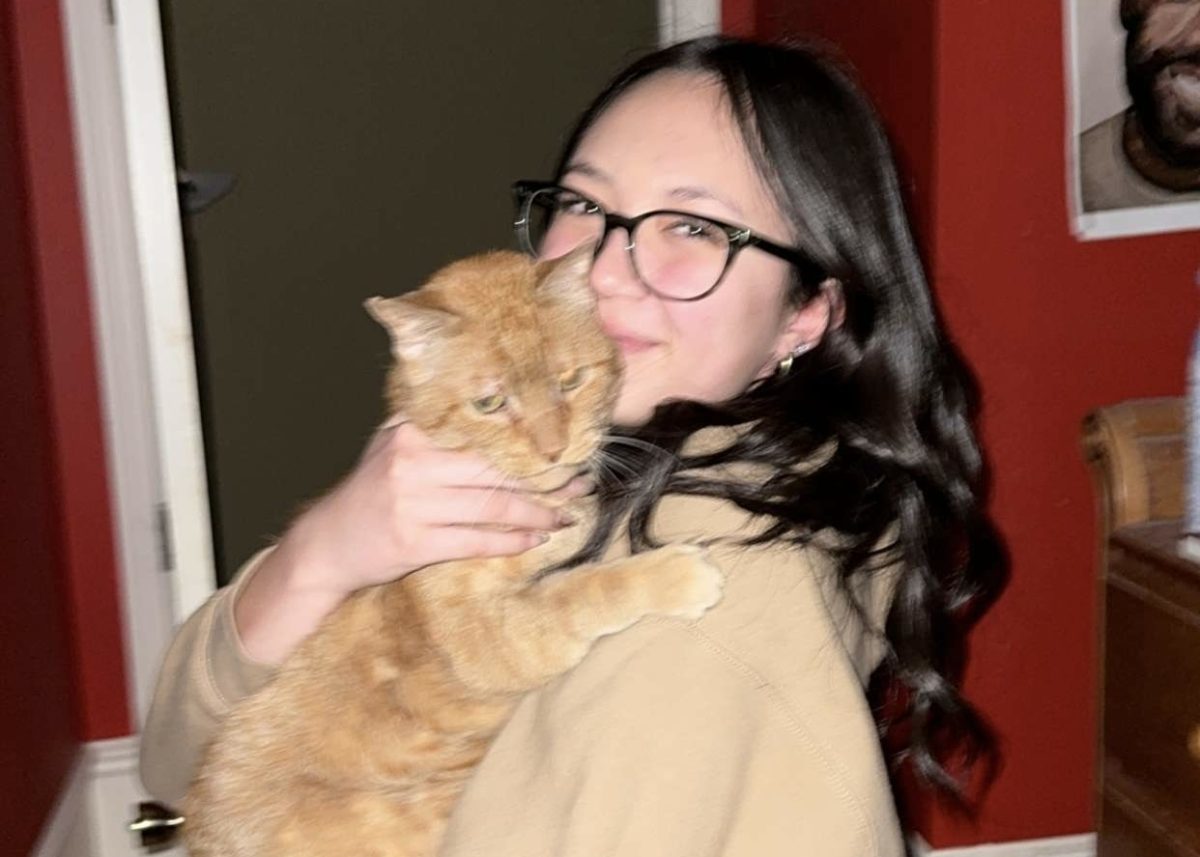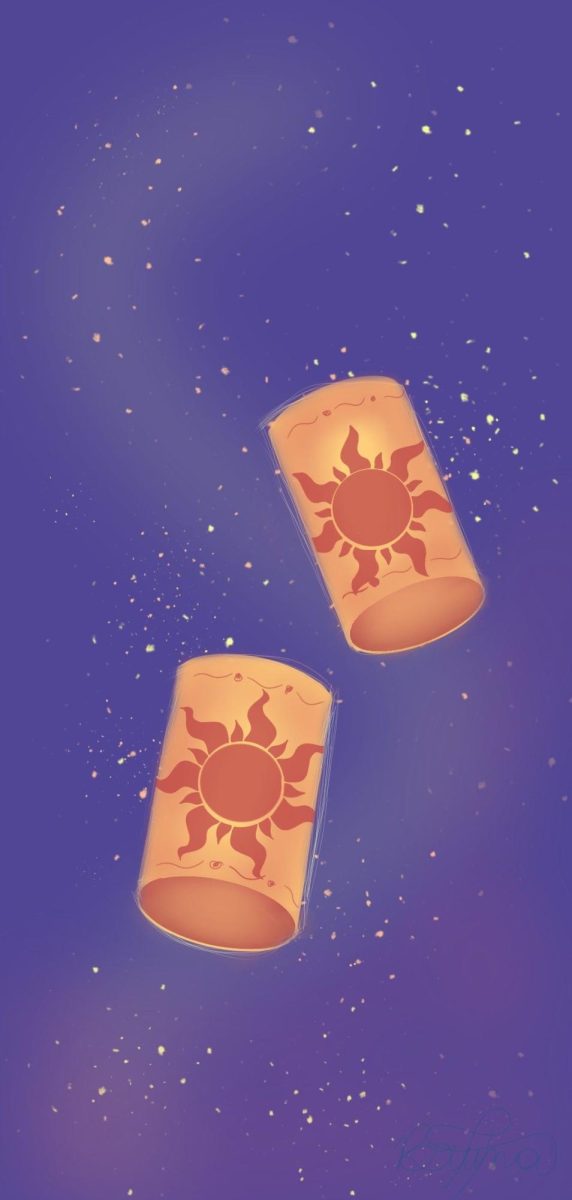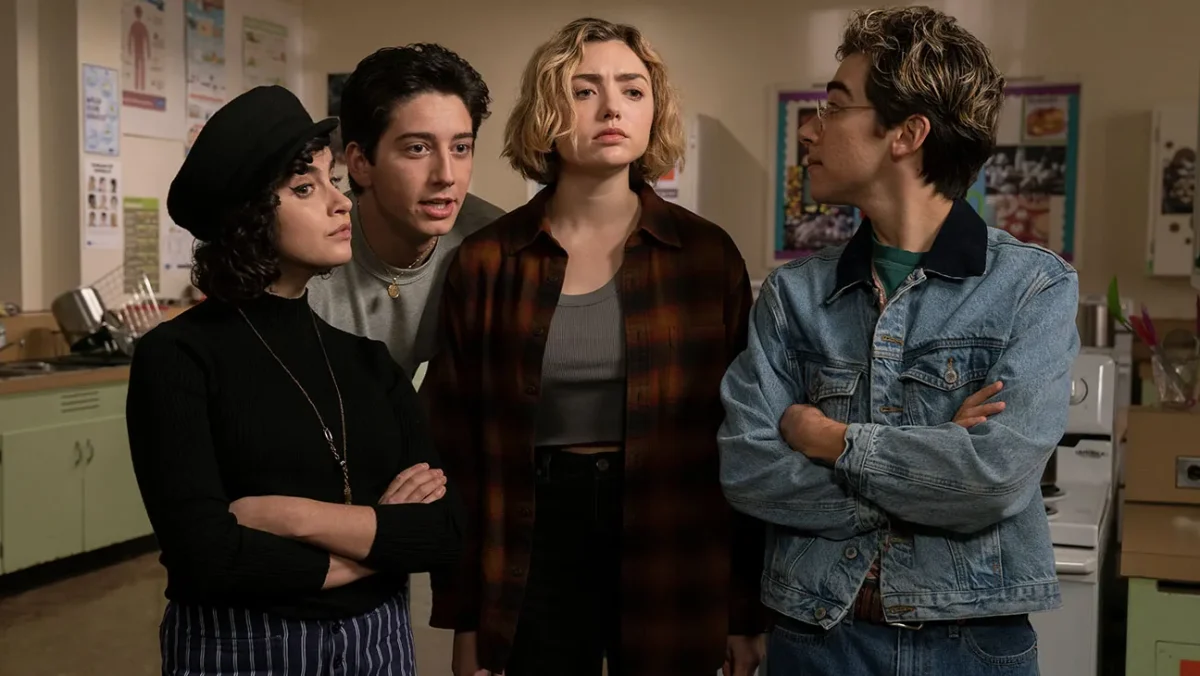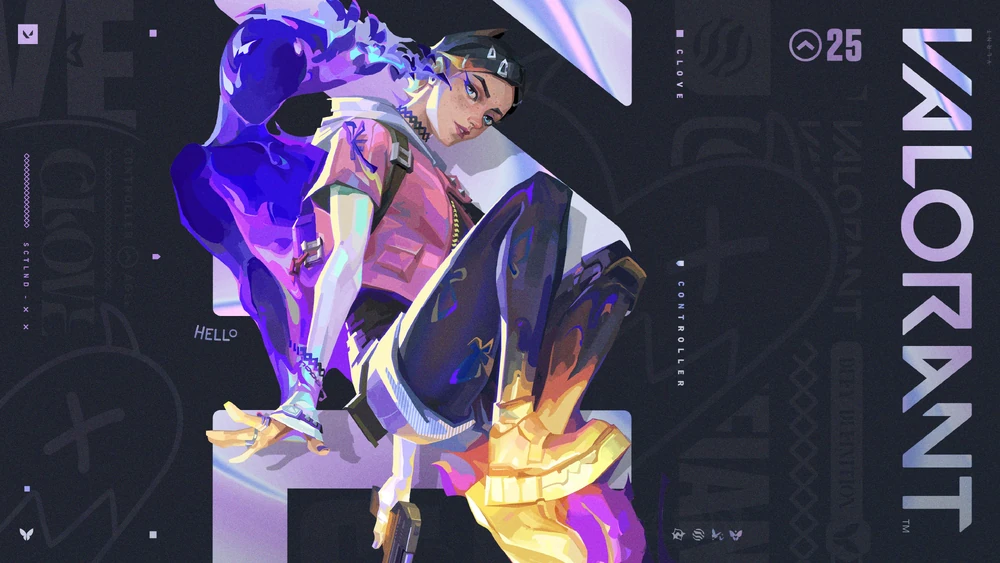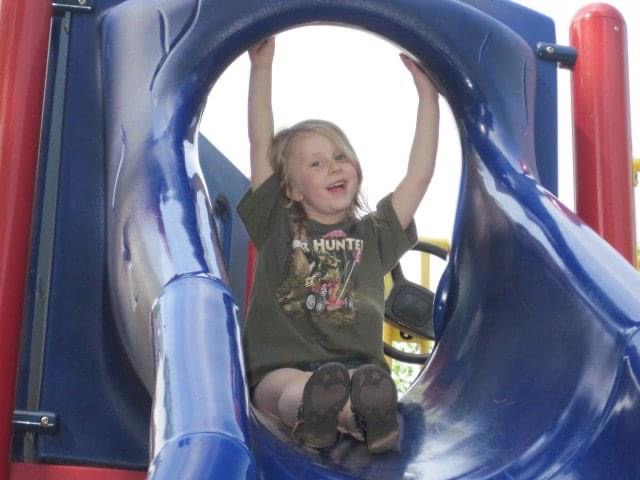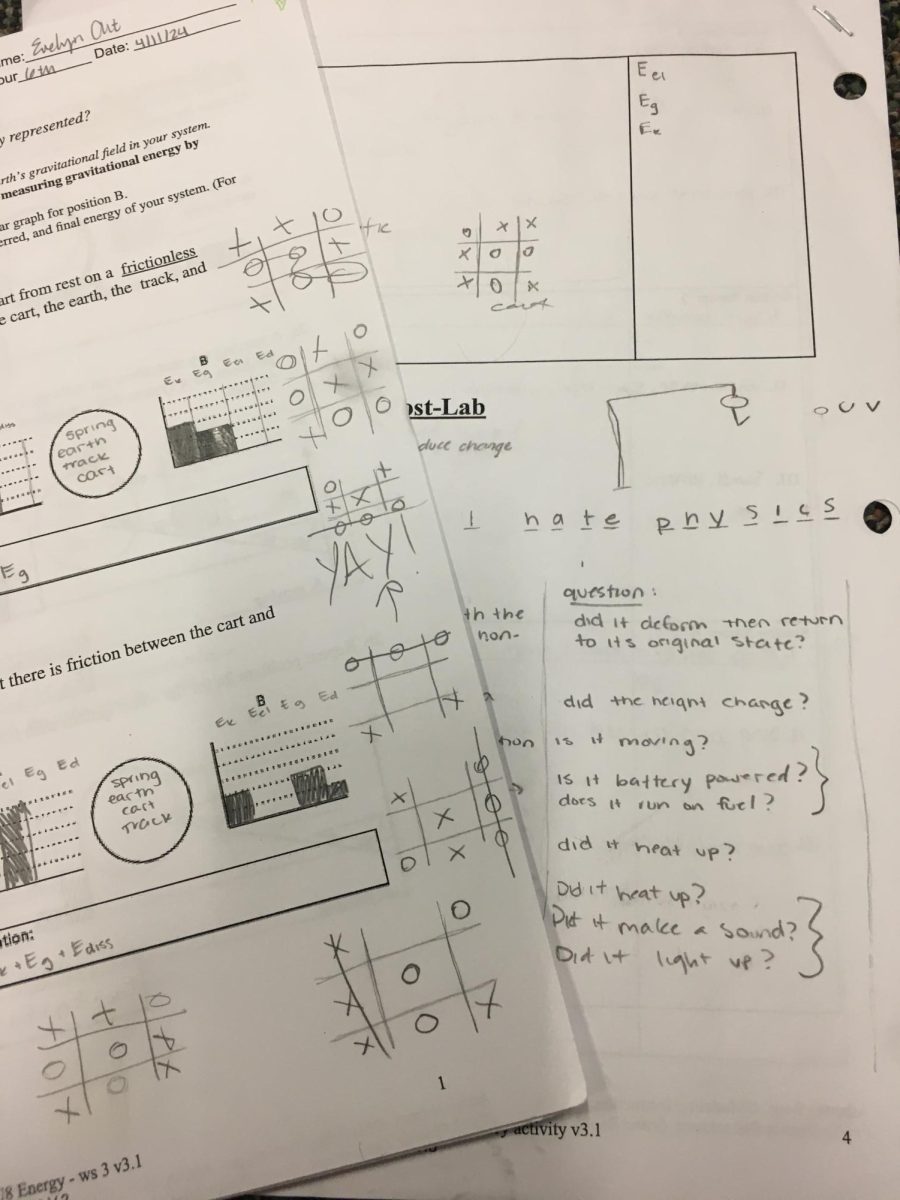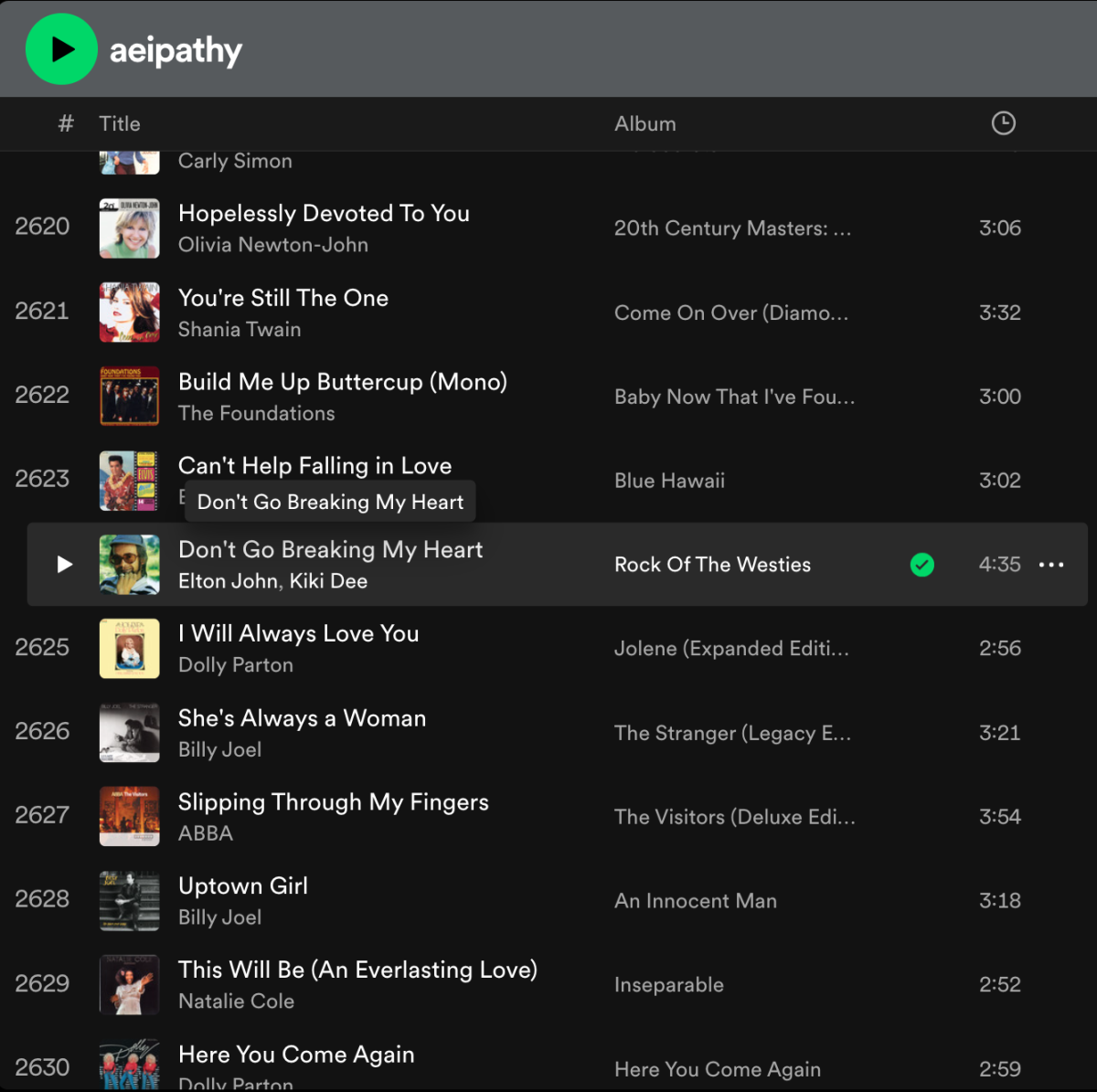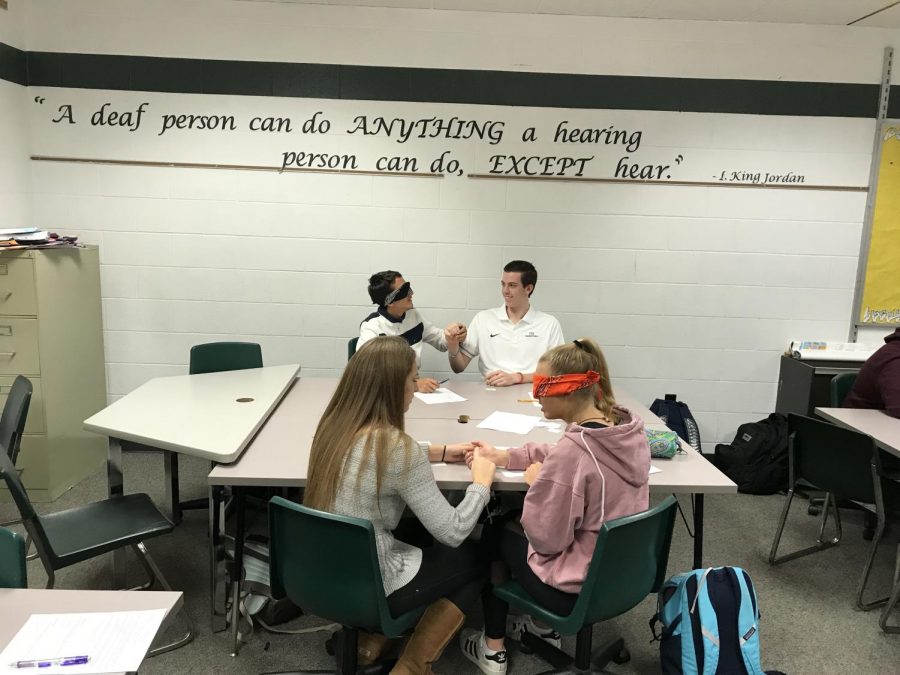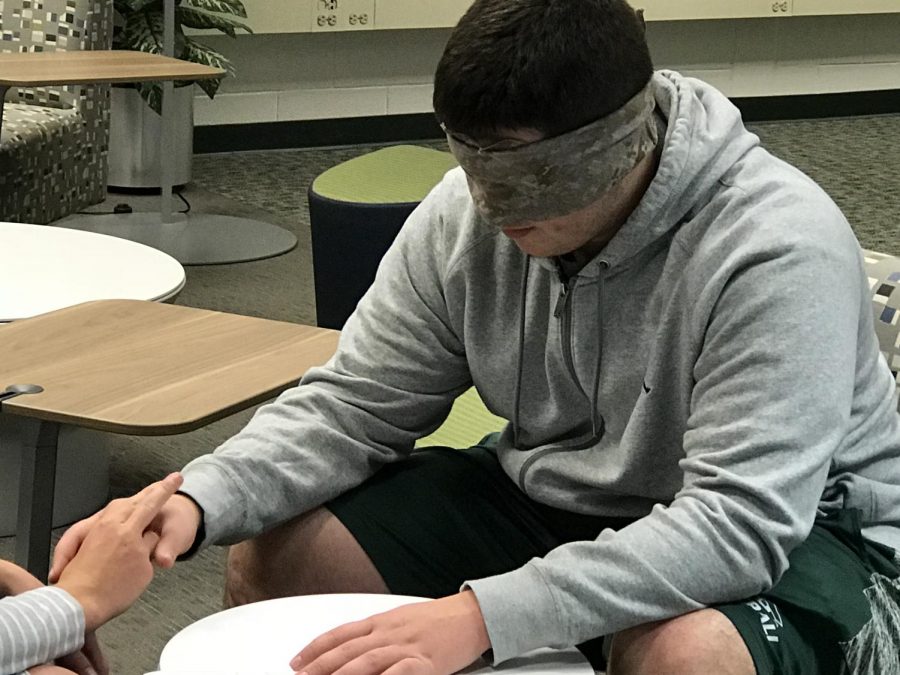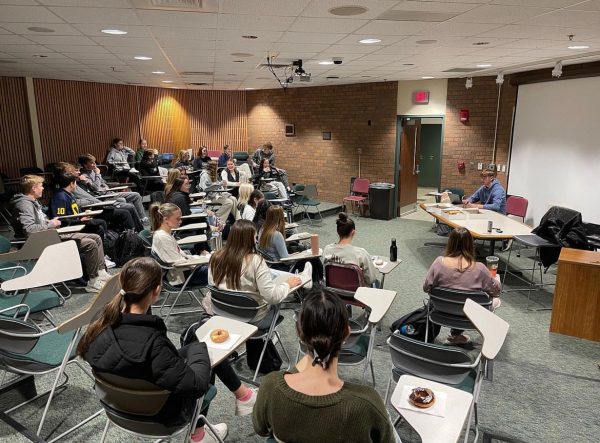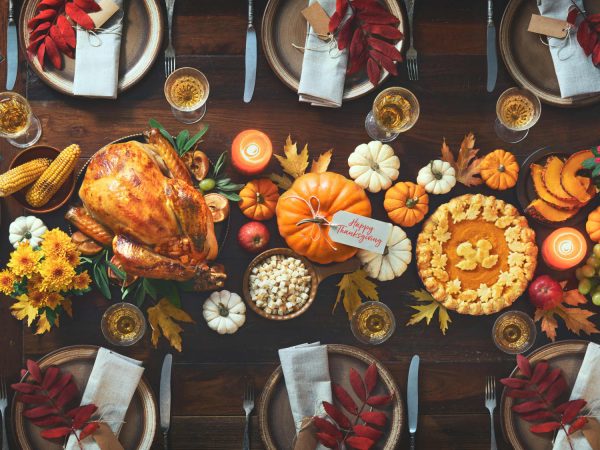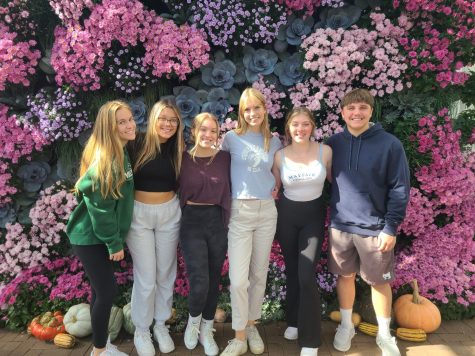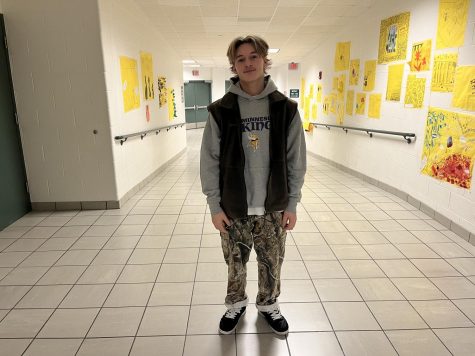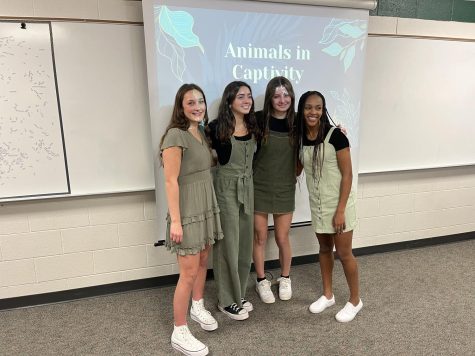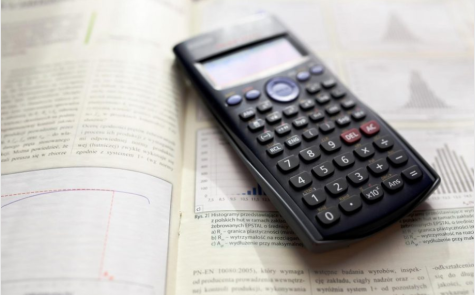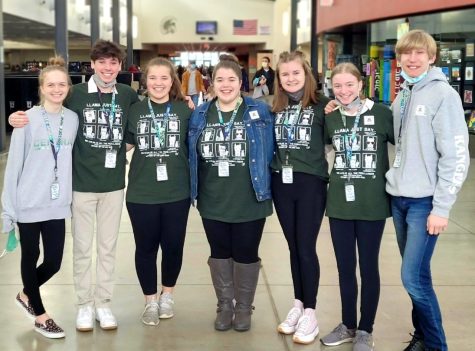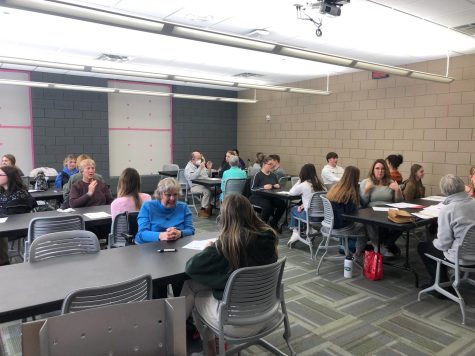ASL students participate in deaf-blind challenges
Observing attentively, sign language teacher Kimberly Williamson watched her Level-Two sign language students lead each other down the halls. As the blindfolded student physically signed to his guide, the pair successfully made it down the hallway and washed their hands. Smiling, Williamson gazed as she watched her goal of having her students being able to communicate solely through sign language unfold before her eyes.
This activity that students partook in was part of a much larger, eight-day sign language event. With a goal of giving students the opportunity to experience the condition of being deaf or blind for themselves, Williamson designed a program to replicate the unique circumstances. This program blossomed two years ago when Williamson realized that students were not truly grasping the importance of sign language.
“When kids come into sign language, and I ask them what they know about sign language, they always just say, ‘Helen Keller used it,'” Williamson said. “But I wanted to do a different approach. Yes, Helen Keller did use it, but let’s go over how hard it is to do; it’s not something super easy.”
What began as a short, one-day activity has evolved into a week-and-a-half long event that opens students’ eyes to the struggles of the deaf/blind. Students began by doing a Helen Keller research project to familiarize themselves with the famous sign language icon. After learning about Keller’s lifestyle, students embarked on a journey to replicate her life. Using seven unique activities, Williamson was able to come very close to covering the aspects of a deaf-blind life.
“It gave me a new respect for deaf and blind people and what they have to go through every day,” sophomore ASL student Caroline Delaney said. “For example, getting dressed is something that I don’t give a second thought to. But for deaf-blind people, it can be a challenge.”
Getting dressed and being guided around the school presented the biggest challenge for students attempting the activities. All of the detail behind extracting the correct item of clothing, positioning it properly, and successfully getting it on conferred much challenge for blindfolded students, who were used to being able to get dressed with ease. Additionally, there was even more difficulty in being guided around the school.
“The biggest challenge was putting my trust in my partner,” Caroline said, “especially letting them lead me [around school] as though I was deaf and blind and instructing me through the different activities.”
On the other hand, a few of Williamson’s challenges offered much fewer obstacles. In the “feel and guess” activity, even with obscure objects such as phone jacks and dog bones, students were able to correctly identify the items with ease. Additionally, by invoking motor skills, signing skills, and creativity, most students were able to complete the blindfolded Lego-building activity with no complication.
In all of the activities, the biggest goal was to keep the circumstances similar to those of the deaf-blind to truly reproduce the unique conditions.
“I think it’s important for them to know how hard it is for someone who is deaf-blind to learn how to adapt,” Williamson said. “I think it makes them realize how people in this world have a very negative connotation of deaf people. For students to see how hard it is for someone who is deaf, blind, or deaf-blind to communicate with someone is amazing. They all think it’s really easy, and it’s really not.”
We all have an extra way to talk to each other in hallways or when we see each other in public. We can say a thousand words without moving our lips.
— Payton Corcoran
Williamson’s objective was definitely achieved, as students’ perspectives on blind people and their challenges were changed immensely. For sophomore Payton Corcoran, the vast significance of the distinctive language of ASL was revealed to him.
“[Overall], it taught me that it means so much more to be deaf-blind than just having two fewer senses than everyone else,” Payton said. “It showed me that you must be persistent, resilient, and hard-working to get the simplest tasks done. It helped me become a better communicator and [helped me] learn to use ASL in so many more ways than I thought I could.”
As Payton advances through ASL, he now has a fresh outlook on sign language and all of its components. Furthermore, he and his classmates will be able to further appreciate the spirit and significance of the unique language.
“[I love] the relationship that all the ASL students have with each other,” Payton said. “We all have an extra way to talk to each other in hallways or when we see each other in public. We can say a thousand words without moving our lips.”
Next year, in ASL Level Three, Caroline, Payton, and the rest of their peers will expand on these activities even further by going to an elementary classroom and teaching third-graders about Helen Keller, deaf-blindness, and its effects. But for now, students will continue in ASL Two with a newfound knowledge about deaf-blindness and true understanding of the meaningful implications of the language they are learning.
“These activities bettered me as an ASL student because it expanded my knowledge on the spectrum of deafness and the different ways deafness affects people in the deaf community,” Caroline said. “I don’t think that there is any way to choose just one of my favorite things about ASL. I love how I learn something new every day. I love how I can use a different language to communicate with my classmates. I love everything about ASL.”
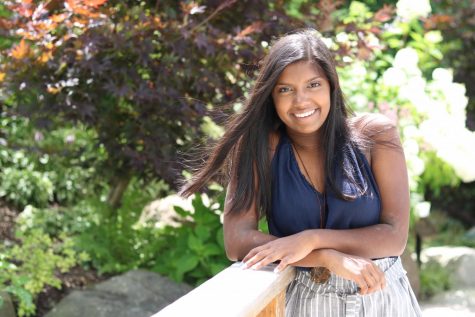
Nisha Rajakrishna is a senior and entering her last year on staff as an Editor-in-Chief. Nisha loves to travel and experience new cultures, and in her...













